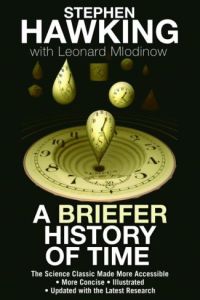Join getAbstract to access the summary!

Join getAbstract to access the summary!
Stephen Hawking and Leonard Mlodinow
A Briefer History of Time
Bantam, 2008
What's inside?
What we know about everything and how we know it.
Recommendation
Stephen Hawking’s first edition of this book came out in 1988. It sold more than 10 million copies, but you might hesitate to try reading it, given the book’s universal ambition. Now, you can pick up this abbreviated, accessible revision with pleasure and anticipation. Hawking and Leonard Mlodinow smoothly explain the most profound questions about the physical world. They illustrate their points with brief stories, analogies and a cluster of images. The result is a compressed introduction to science, physics and cosmology, with sketches of key historical points. Even with clear explanations, the conceptual density can be challenging. Still, it’s the best explanation out there. getAbstract recommends this highly readable tour through the universe’s most compelling mysteries.
Summary
About the Authors
Physicist Stephen Hawking, author of A Brief History of Time, was generally considered to be the most brilliant theoretical physicist since Albert Einstein. Hawking passed away on March 14, 2018. Physicist Leonard Mlodinow wrote Feynman’s Rainbow and The Drunkard’s Walk, among other books.


















Comment on this summary